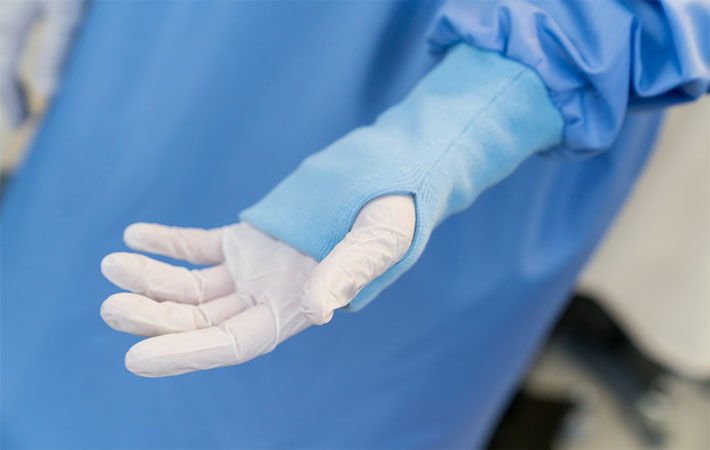
The new gown prototypes are being sampled in a polyester and carbon textile specially developed in the UK, which has antiviral properties and can be washed in temperatures high enough to kill off all viruses and bacteria.
This fabrication would allow for the gowns to be safely reused after washing, helping reduce the impact on the environment, as most existing isolation gowns are disposed of after a single use.
The gown designs have been based on feedback given by healthcare workers who are treating people with COVID-19, including nursing staff from Nottingham University Hospitals NHS Trust and Diaverum UK. A key development – based on user feedback – is the improved comfort for the wearer, to allow nurses to perform their roles with greater ease.
“Nurses do such an important job by laying their own personal health on the line for their patients, so it’s important that they’re given the best equipment possible. Isolation gowns are not currently afforded the research and development that a typical uniform is, yet they’re used every day to protect thousands of people on the frontline of healthcare. This is about moving forwards to a higher level of design and fit, which is sustainable in terms of the environment and the suitability to the wearer,” said professor Katherine Townsend from the Nottingham School of Art & Design.
The designs - of which there are three prototypes – feature ribbed necklines for comfort, dropped and raglan sleeves for easier arm movements and deep cuffs with thumbholes which can be turned back to suit individual arm lengths. One design fastens at the back, similar to a traditional gown. Another fastens at the front left shoulder in a safe way to make putting on (donning) and taking off (doffing) easier, reducing the chance of cross-contamination. The third gown is zero-waste to maximise sustainability, Nottingham Trent University said in a press release.
The gowns are being created in three different grouped sizes – Small, Medium and Large - to accommodate sizes XS - XXXL, making them more appropriate for individuals, as existing gowns are generally one-size-fits-all.
“Our designs are in response to COVID-19 and beyond - they are intended to support health workers who are treating people in any acute care context. Most nurses told us that while existing PPE makes them feel protected, it can often be uncomfortable to wear, due to poor fit and fabric quality, which were the common problems presented to us,” professor Townsend added.
In addition to Dr Sterman, a uniform and corporate wear specialist, the team includes pattern cutting designers Eloise Salter and Karen Harrigan from the Fashion department at NTU.
The researchers are working with a private sector PPE provider with the next stage of the project involving wearer trials with nurses at UK hospitals. They are keen to gain further feedback from nurses across the UK about the gowns they are wearing, their experiences and preferences.
Fibre2Fashion News Desk (RR)

